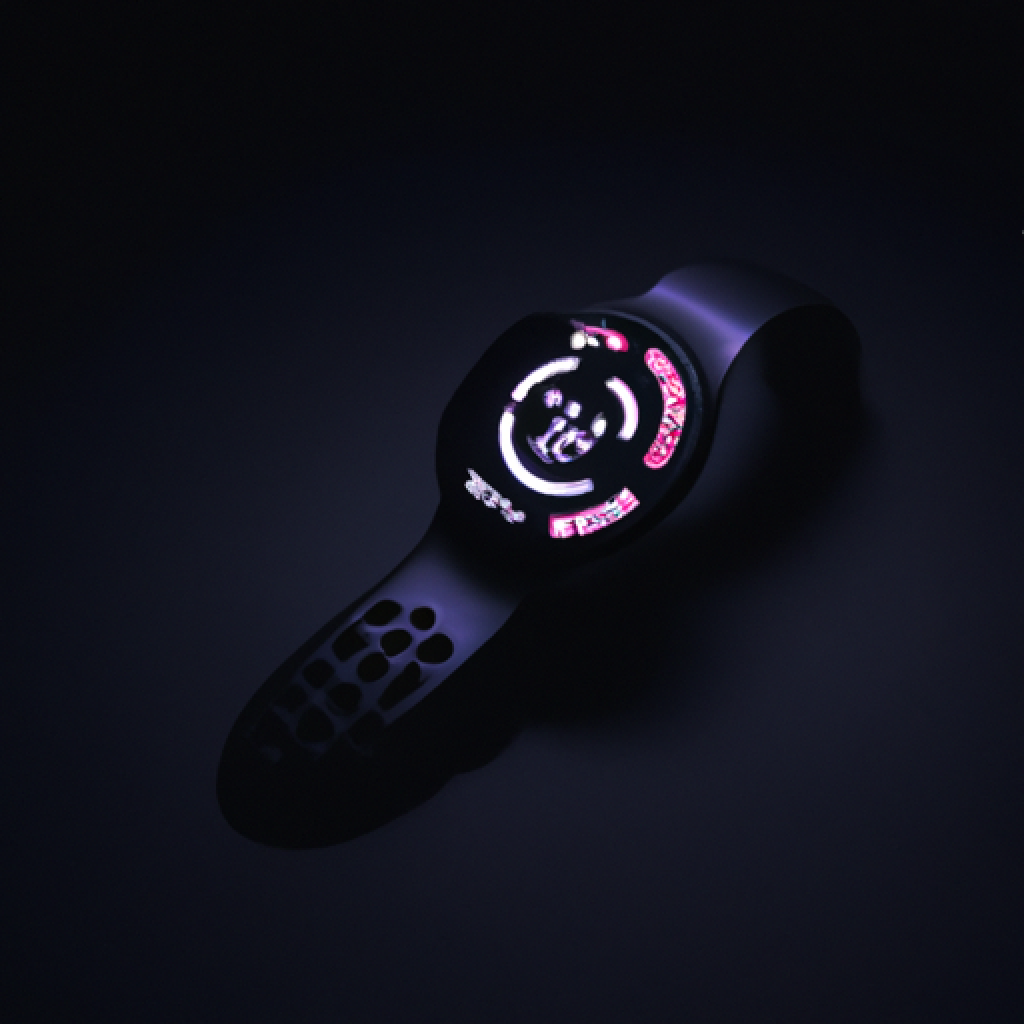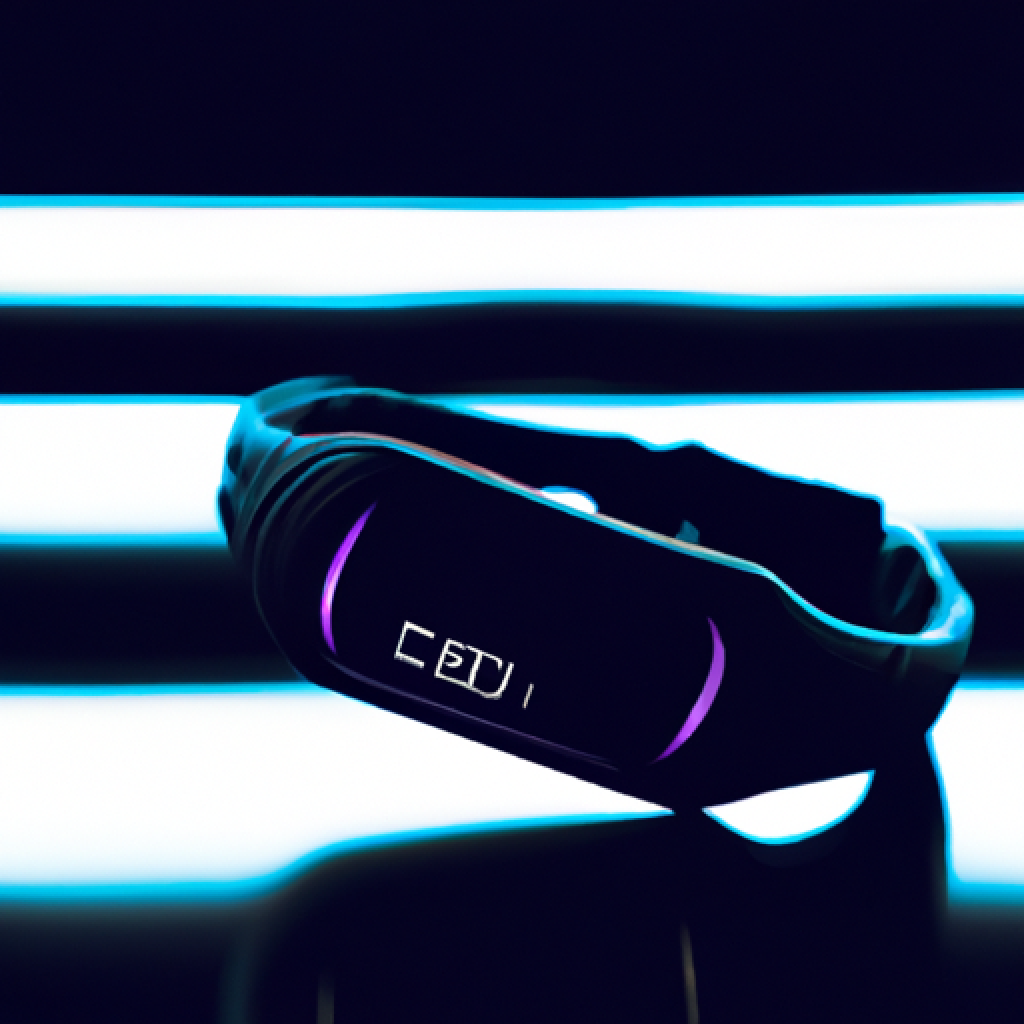What Are The 5 Wearable Technologies Today?

So, let’s talk about wearable technologies. You know, those smart devices that we can actually wear on our bodies? They’re pretty neat, if you ask me. And hey, guess what? I’ve got a little secret for you – I’m about to spill the beans on the top 5 wearable technologies that are making waves right now. So, strap in and get ready to geek out with me, because we’re about to enter the world of wearable wonders.
Understanding Wearable Technologies
In today’s digital age, wearable technologies have become increasingly popular and prevalent. These devices, worn on the body, have revolutionized the way we interact with technology and have the potential to enhance various aspects of our lives. From smartwatches to augmented reality glasses, there are various types of wearable technologies that serve different purposes. Understanding the definition, functionality, and significance of these devices is crucial in comprehending their impact on our daily lives.
Definition of Wearable Technologies
Wearable technologies refer to electronic devices that can be worn on the body, usually in the form of accessories or clothing. These devices are equipped with sensors and technologies that collect data and perform various functions to assist users in their daily activities. The main purpose of wearable technologies is to provide convenient and seamless integration of technology into our lives by allowing us to access information and perform tasks without the need for traditional devices such as smartphones or computers.
How They Work
Wearable technologies rely on a combination of sensors, processors, and connectivity to function effectively. The sensors embedded within these devices can detect and collect data related to various metrics such as heart rate, steps taken, sleep patterns, and more. The processors within the wearables then analyze this data and provide useful insights and feedback to the users. With connectivity options such as Bluetooth or Wi-Fi, these devices can sync the collected data with companion apps on smartphones or computers, allowing users to track their progress and make informed decisions based on the data collected.
Importance of Wearable Technologies Today
Wearable technologies have gained immense importance in today’s society due to their potential to improve various aspects of our lives. These devices have transformed the way we monitor and manage our health, enabling individuals to track their physical activity, sleep patterns, and even vital signs. They have also revolutionized the fitness industry, providing users with real-time feedback and motivation to achieve their health goals. Additionally, wearable technologies have found applications beyond personal use, with industries such as healthcare, sports, and even fashion incorporating these devices to enhance their offerings and services.
Smartwatches and Fitness Bands
Definition of Smartwatches and Fitness Bands
Smartwatches and fitness bands are two of the most popular and widely used wearable technologies available today. Smartwatches are wrist-worn devices that offer functionalities similar to smartphones, including receiving notifications, making calls, and running apps. Fitness bands, on the other hand, are specifically designed to track and monitor physical activity, sleep, and other health-related metrics.
Popular Brands on the Market
When it comes to smartwatches, some of the most popular brands on the market include Apple, Samsung, and Garmin. Apple’s Apple Watch has gained significant popularity due to its seamless integration with the iOS ecosystem and its wide range of features, including fitness tracking, heart rate monitoring, and even electrocardiogram (ECG) capabilities. Samsung’s Galaxy Watch series offers similar functionalities and is compatible with both Android and iOS devices. Garmin, known for its expertise in GPS and sports-related wearables, offers a wide range of smartwatches catered to outdoor enthusiasts and athletes.
In the fitness band category, Fitbit, Garmin, and Xiaomi are some of the notable brands. Fitbit’s range of fitness bands, including the Fitbit Charge and Fitbit Inspire, are known for their accurate activity tracking, sleep monitoring, and intuitive app interface. Garmin’s Vivosmart and Xiaomi’s Mi Band series also offer similar functionalities at more affordable price points, making them popular choices for individuals looking to monitor their health and fitness without breaking the bank.
Features and Benefits
Smartwatches and fitness bands offer a plethora of features and benefits for their users. Both devices typically include activity tracking, heart rate monitoring, and sleep tracking features, which allow individuals to gain valuable insights into their overall health and well-being. Smartwatches, with their larger screens and ability to run apps, provide users with additional functionalities such as receiving notifications, making payments, and accessing apps directly from their wrist.
These devices also encourage users to stay active and adopt a healthier lifestyle by providing personalized goals, achievements, reminders, and motivation to reach their fitness targets. Additionally, many smartwatches and fitness bands offer water resistance and built-in GPS capabilities, making them suitable for outdoor activities such as swimming and running.
Whether it’s tracking steps, monitoring heart rate, or simply receiving notifications on the go, smartwatches and fitness bands have become essential accessories for individuals seeking to maintain an active and connected lifestyle.

Augmented Reality Glasses
Understanding Augmented Reality (AR)
Augmented reality (AR) technology is rapidly gaining attention as a popular application in various fields. AR refers to the integration of digital information or virtual objects into the real-world environment, enhancing the user’s perception of reality. Unlike virtual reality (VR), which immerses users in a completely simulated environment, AR overlays digital content onto the user’s view of the real world.
Notable AR Glasses Brands
Several notable brands have entered the market with their own AR glasses. One of the pioneers in this field is Google, with its Google Glass. Although the initial consumer version faced challenges in terms of privacy concerns and acceptance, Google Glass has found success in the enterprise sector, offering solutions for industries such as manufacturing, healthcare, and logistics. Microsoft’s HoloLens is another notable AR glasses brand, known for its capabilities in spatial mapping, gestures recognition, and mixed reality experiences. Other emerging brands in the AR glasses space include Magic Leap, Vuzix, and Epson.
Potential Uses of AR Glasses
AR glasses have the potential to revolutionize various industries and transform the way we experience the world. In the healthcare field, AR glasses can assist surgeons during complex procedures by overlaying important patient information directly into their field of view, allowing for enhanced precision and efficiency in surgeries. Similarly, in education, AR glasses can provide students with immersive learning experiences, allowing them to visualize complex concepts or historical events in a more interactive and engaging manner.
AR glasses can also enhance the productivity and safety of workers in industries such as logistics, construction, and manufacturing. By overlaying relevant information, instructions, or warnings directly onto the user’s view, these devices can help workers perform tasks more efficiently and accurately, reducing errors and increasing overall productivity.
Furthermore, AR glasses have the potential to revolutionize entertainment and gaming experiences by providing users with interactive and immersive virtual experiences that seamlessly blend into the real world. From virtual tours to immersive gameplay, AR glasses have the ability to create new forms of entertainment and storytelling that were previously unimaginable.
Smart Clothing
Explanation of Smart Clothing
Smart clothing, also known as e-textiles or smart textiles, refers to garments or accessories that are embedded with electronic components and advanced technologies. Smart clothing combines fashion and technology by integrating sensors, conductive fabrics, and connectivity to provide additional functionalities beyond traditional textiles.
Functionality and Utility
Smart clothing offers a wide range of functionalities and utilities that cater to various needs and preferences. Some smart clothing products are designed to monitor vital signs, such as heart rate and respiration, providing wearers with real-time health data and alerts. Others focus on improving athletic performance or preventing injuries by tracking movements and providing feedback on posture and technique.
Additionally, smart clothing can offer climate control features by utilizing technologies such as heating elements or cooling systems embedded within the fabric. This allows wearers to regulate their body temperature and stay comfortable in extreme weather conditions.
Smart clothing can also play a role in safety and security. For example, garments designed for outdoor activities can incorporate reflective materials or LED lights to enhance visibility and improve safety during nighttime or low-light conditions. Similarly, smart clothing can include emergency alert systems that notify designated contacts in case of an accident or dangerous situation.
Popular Smart Clothing Products on the Market
The market for smart clothing continues to evolve, with brands constantly innovating and introducing new products. Some notable examples of smart clothing include the Sensoria Fitness Socks, which are equipped with sensors that monitor foot landing and cadence to improve running form and reduce the risk of injuries. Lumo Run shorts are another popular smart clothing product, featuring motion sensors that provide real-time feedback on running form and help users achieve their performance goals.
In the fashion industry, brands like CuteCircuit have made waves with their cutting-edge designs, incorporating LED lights and interactive technologies into their garments. Other examples of smart clothing products include heated jackets, posture-correcting shirts, and even a smart bra that monitors heart rate and provides recommendations for optimal workouts.
Smart clothing combines fashion, functionality, and technology to create garments that enhance the way we live, work, and engage with the world.

Hearables
What Are ‘Hearables’
Hearables are wearable devices that focus primarily on enhancing and augmenting the user’s auditory experience. These devices are designed to be worn in or around the ears and offer a range of functionalities beyond traditional headphones or hearing aids.
Hearables can provide audio streaming capabilities, allowing users to listen to music, podcasts, or phone calls without the need for separate headphones or earbuds. Additionally, many hearables offer noise cancellation features, allowing users to block out unwanted background noise and focus on the audio they want to hear.
These devices can also incorporate advanced technologies such as voice assistants, biometric sensors, and language translation capabilities. With voice assistants like Apple’s Siri or Amazon’s Alexa, users can control their hearables through voice commands, making it even more convenient to access information or perform tasks while on the go. Biometric sensors can track heart rate and other health-related metrics, providing users with valuable data for fitness and health monitoring. Language translation capabilities, often seen in hearables like Google’s Pixel Buds, can break down language barriers by providing real-time translation between languages.
Best Hearable Brands
Several brands have emerged as leaders in the hearables market, offering innovative and feature-rich devices. Apple’s AirPods and AirPods Pro have gained immense popularity due to their seamless integration with Apple devices and their superior sound quality. These wireless earbuds allow users to listen to music, make calls, and access Siri with just a tap or voice command.
Other notable brands include Bose, known for its noise-canceling technology and audio quality, and Sony, which offers a range of hearable devices that cater to different needs and preferences. The Bose QuietComfort Earbuds and Sony WF-1000XM4 are examples of premium hearables that combine cutting-edge technology and exceptional sound performance.
Additionally, brands like Jabra and Samsung have entered the hearables market with their own offerings. Jabra’s Elite series, including the Elite 75t and Elite 85t, are known for their excellent call quality and customizable sound profiles. Samsung’s Galaxy Buds lineup offers a range of options for Android users, featuring sleek designs, robust battery life, and effective noise cancellation.
With advancements in audio technology and the growing demand for convenient and immersive audio experiences, the hearables market is expected to expand further, providing users with even more options to enhance their auditory experience.
How Hearables Will Shape the Future
Hearables have the potential to shape the future of audio communication, personal health monitoring, and even human-computer interactions. These devices are gradually becoming more than just audio accessories, evolving into sophisticated devices that can seamlessly integrate with various digital ecosystems and offer a wide range of functionalities.
As voice assistants continue to improve, hearables will become even more capable of understanding and responding to users’ needs, making it possible to access information, control smart home devices, or perform tasks simply by speaking. This shift towards voice-controlled technology has the potential to redefine the way we interact with our devices and the digital world around us.
Hearables also have the potential to play a significant role in personal health monitoring and well-being. With the incorporation of biometric sensors, these devices can track heart rate, activity levels, and even sleep patterns. This data can provide valuable insights into an individual’s overall health and fitness, allowing for personalized recommendations and interventions.
Furthermore, the continued development of language translation capabilities in hearables can bridge communication gaps and foster greater global connectivity. By breaking down language barriers, hearables can facilitate better understanding and collaboration across cultures, opening up new opportunities for international cooperation and communication.
In summary, hearables are more than just audio devices. Their potential to enhance communication, personal health, and user interactions makes them a significant player in the wearable technology landscape, with exciting possibilities for the future.
Health Tracking Devices
Explanation of Health Tracking Devices
Health tracking devices, also known as wellness wearables, are wearable technologies specifically designed to monitor and track various health-related metrics. These devices are equipped with sensors that collect data such as heart rate, sleep patterns, activity levels, and more. By tracking and analyzing this data, health tracking devices provide users with insights into their overall health and well-being, empowering them to make informed decisions about their lifestyle and habits.
Their Role in Healthcare
Health tracking devices have revolutionized the healthcare industry by enabling individuals to take a proactive approach to their health. With the ability to monitor vital signs and track various health metrics, users can gain a deeper understanding of their physical well-being and identify potential issues or areas for improvement.
These devices can be particularly beneficial for individuals with chronic conditions such as diabetes or hypertension, allowing them to closely monitor their health and detect any abnormalities or trends. The data collected by health tracking devices can be shared with healthcare professionals, providing a comprehensive view of an individual’s health and assisting in the diagnosis and management of conditions.
Health tracking devices also promote preventive healthcare by encouraging individuals to lead healthier lifestyles. By monitoring activity levels, sleep patterns, and other metrics, users are motivated to make positive changes in their habits and take steps toward a healthier lifestyle. This proactive approach to healthcare can lead to better overall health outcomes and reduce the risk of chronic diseases.
Notable Health Tracking Wearables
The market for health tracking devices is vast, with various options available to cater to different needs and preferences. Fitbit, one of the pioneers in the wearable technology industry, offers a wide range of health tracking wearables, including fitness bands and smartwatches. Fitbit devices are known for their accurate activity tracking, sleep monitoring, and user-friendly interfaces.
Apple’s Apple Watch, in addition to its smartwatch functionalities, also serves as a powerful health tracking device. Equipped with an optical heart rate sensor, an accelerometer, and an electrical heart sensor, the Apple Watch can monitor heart rate, track workouts, and even perform an electrocardiogram (ECG) to detect irregular heart rhythms.
Garmin, known for its expertise in GPS and sports-related wearables, offers health tracking devices that cater to outdoor enthusiasts and athletes. With features such as GPS tracking, advanced activity tracking, and onboard music storage, Garmin devices provide comprehensive health and fitness monitoring for users with active lifestyles.
These are just a few examples of the extensive range of health tracking wearables available on the market. From basic fitness trackers to advanced smartwatches, health tracking devices have become indispensable tools for individuals striving to lead healthier lives and take control of their well-being.

Advanced and Future Wearable Technologies
Emerging Wearable Technologies
The field of wearable technologies is rapidly advancing, with new and innovative devices constantly being developed. Some emerging wearable technologies that show promising potential include:
1. Smart Glasses: Building upon the foundations laid by augmented reality glasses, smart glasses are poised to become more sophisticated and mainstream. These glasses can display information, notifications, and even virtual objects directly onto the user’s field of view, without the need for additional screens or devices. With advancements in display technology and connectivity options, smart glasses have the potential to revolutionize the way we interact with digital content in our everyday lives.
2. Smart Jewelry: Combining fashion and technology, smart jewelry offers a discreet and stylish way to incorporate wearable technologies into our daily lives. From smart rings that track sleep and fitness metrics to necklaces that provide personalized notifications, smart jewelry focuses on blending seamlessly into our fashion choices while offering valuable functionalities.
3. Smart Tattoos: A concept that is still in its early stages but holds tremendous potential is the development of smart tattoos. These tattoos would be embedded with technology, such as sensors or LED lights, and could serve various purposes, including health monitoring, biometric identification, or even as interactive displays. With the ability to be applied directly onto the skin, smart tattoos present an intriguing alternative to traditional wearable devices.
Predicted Future Trends
As wearable technologies continue to evolve, several key trends are expected to shape the future of this industry:
1. Miniaturization and Integration: One trend that has been evident in the advancement of wearable technologies is miniaturization. Devices are becoming smaller, sleeker, and more inconspicuous, allowing for greater convenience and comfort. Additionally, integration with other technologies, such as smartphones or smart home devices, is expected to become more seamless, creating a more interconnected ecosystem of smart devices.
2. Artificial Intelligence (AI) Integration: With the increasing capabilities of artificial intelligence, the integration of AI into wearable technologies is predicted to become more prevalent. AI algorithms can analyze data collected by wearable devices in real-time, providing more accurate and personalized insights. This integration can enhance the overall user experience and enable wearables to adapt to individual needs and preferences.
3. Biometric Authentication: As wearable technologies become more integrated into our daily lives, the need for secure authentication methods becomes crucial. Biometric authentication, such as fingerprint or voice recognition, is expected to be further incorporated into wearable devices, ensuring secure access to personal data. This technology has the potential to replace traditional passwords or PINs, making wearables more convenient and secure.
Impact on Daily Life and Industries
The continued development and adoption of wearable technologies will have a profound impact on various aspects of our daily lives and industries. In terms of personal health and fitness, wearables will play a significant role in motivating individuals to lead healthier lifestyles, improve fitness levels, and manage chronic conditions effectively. With the ability to track vital signs, provide real-time feedback, and offer personalized recommendations, wearables can empower users to make informed decisions about their well-being.
In industries such as healthcare and medicine, wearable technologies have the potential to enhance patient care and improve treatment outcomes. Health tracking devices enable remote monitoring of patients, allowing healthcare professionals to access real-time data, detect potential issues, and provide timely interventions. Wearables can also facilitate telemedicine, offering patients greater convenience and access to healthcare services.
Wearable technologies can also transform industries such as manufacturing, logistics, and construction. By providing workers with real-time information, instructions, or warnings in their field of view, AR glasses and other wearables can improve efficiency, reduce errors, and enhance safety in these high-risk environments. Workers can access crucial data or troubleshoot issues without the need for bulky devices or extensive training.
Furthermore, the entertainment and gaming industries will experience a significant shift with the integration of wearable technologies. Virtual reality headsets and other immersive wearables will take gaming experiences to new heights, providing users with more interactive and realistic gameplay. These technologies can also create new forms of storytelling and entertainment, blurring the lines between virtual and physical experiences.
In summary, the impact of wearable technologies will extend beyond personal use, influencing various industries and revolutionizing the way we live, work, and engage with technology.
Benefits of Wearable Technologies
Improving Health and Fitness
One of the key benefits of wearable technologies is their ability to improve health and fitness outcomes. Health tracking devices, fitness bands, and smartwatches allow individuals to monitor their physical activity, heart rate, sleep patterns, and other health metrics accurately. By providing real-time data and feedback, wearables encourage individuals to make positive changes in their lifestyle, leading to improved fitness levels, better sleep quality, and overall well-being. These devices can also provide motivation, goal-setting features, and social connectivity, creating a sense of community and accountability in achieving health and fitness targets.
Enhancing Productivity
Wearable technologies have the potential to enhance productivity in various aspects of our lives. Smartwatches and hearables, for example, allow users to access notifications, reminders, and even make phone calls without the need to reach for their smartphones. This convenience saves time and promotes focus by reducing distractions. Additionally, wearables equipped with voice assistants enable users to perform tasks, request information, or control smart home devices through voice commands, making daily activities more efficient and seamless. In industries such as logistics or manufacturing, AR glasses can provide workers with real-time information, instructions, or warnings, improving efficiency and reducing errors in complex tasks.
Promoting Safety and Convenience
Wearable technologies offer users a level of safety and convenience that was previously unimaginable. Fitness bands and smartwatches equipped with GPS tracking capabilities provide peace of mind for outdoor enthusiasts or individuals venturing into unfamiliar locations. In case of an emergency, these devices can send alerts and share location information, enabling prompt assistance. AR glasses and other wearables with hands-free functionalities free up users’ hands, allowing them to focus on tasks while accessing relevant information or instructions directly within their field of view. This convenience not only improves efficiency but also promotes safety in high-risk environments.

Drawbacks and Issues of Wearable Technologies
Concerns About Data Privacy
One of the major concerns surrounding wearable technologies is the issue of data privacy. As these devices collect sensitive personal information, including health data, location data, and biometric measurements, there is a risk of this information being exploited or misused. Unauthorized access to user data or data breaches can not only compromise privacy but also have broader implications for individuals’ safety, security, and insurance coverage. To mitigate these concerns, manufacturers and developers need to prioritize data protection, encryption, and transparent privacy policies that give users control over their data.
Issues of Reliability and Accuracy
While wearable technologies offer advanced functionalities, there are concerns regarding their reliability and accuracy. Health tracking devices, for instance, may not always provide precise measurements of vital signs or sleep patterns, leading to discrepancies or misleading data. Calibration, sensor accuracy, and individual variations can impact the reliability of these devices. Similarly, features such as automatic activity detection or sleep tracking may not always accurately identify specific activities or sleep stages. To address these issues, manufacturers must continue to improve the accuracy and calibration of their devices, ensuring that users can rely on the data provided.
Physical Discomfort and Health Risks
The physical comfort and potential health risks associated with wearable technologies are additional considerations. Some wearables, such as smartwatches or fitness bands, may cause skin irritations or discomfort if worn for extended periods without proper ventilation or adjustments. In extreme cases, individuals may develop skin allergies or rashes due to the materials used in the devices. Prolonged exposure to electromagnetic radiation emitted by wearables, particularly those worn close to the body, is also a concern for some users. While regulatory bodies often impose limits on radiation emissions, individuals with specific sensitivities or concerns may opt for alternate wearable options or minimize their use of certain devices.
The Future of Wearable Technologies
Predictions for Future Developments
The future of wearable technologies appears promising, with advancements expected in various areas. Miniaturization and integration will likely continue to be a trend, allowing wearables to become even smaller, more fashionable, and seamlessly integrated into our daily lives. For example, smart clothing is expected to become more prevalent, featuring embedded sensors and conductive fabrics that track health metrics or provide additional functionalities without compromising comfort or style.
Advancements in sensor technologies will lead to more accurate and comprehensive data collection. This, combined with the integration of artificial intelligence and machine learning, will enable wearables to provide more personalized and actionable insights. Users can expect wearables that adapt to individual preferences, make predictions based on patterns, and offer recommendations tailored to their specific needs.
Additionally, as 5G networks become more widespread, wearables will benefit from faster and more reliable connectivity, allowing for seamless data syncing, enhanced multimedia experiences, and real-time interactions. This, coupled with improved battery technologies, will result in wearables with longer battery life and increased capabilities.
Possible Societal Impacts
The increasing adoption and integration of wearable technologies have the potential to create significant societal impacts. Health tracking wearables, for instance, can lead to a shift in healthcare paradigms, empowering individuals to take a more active role in managing their health and well-being. This shift from reactive to proactive healthcare can alleviate the strain on healthcare systems and contribute to better health outcomes overall.
In terms of accessibility, wearables can bridge the digital divide by making technology more inclusive and accessible to individuals with disabilities or limited access to traditional devices. Features such as voice control or haptic feedback can offer new ways for individuals to interact with technology and participate in various activities.
Additionally, the advent of AR glasses and immersive wearables has the potential to transform the way we learn, work, and communicate. Virtual collaboration in remote work settings, interactive learning experiences in education, and enhanced storytelling in entertainment are just a few examples of the societal impacts that wearables can bring about.
Potential Ethical Issues
As wearable technologies become more integrated into our lives, several ethical issues may arise. Privacy concerns, already a significant consideration, will continue to be a prominent ethical issue. Striking a balance between the collection of personal data for functionalities and protecting user privacy will be paramount. Transparent data usage policies, user consent, and robust security measures will help address these concerns.
Moreover, wearable technologies may lead to a blurring of boundaries between private and public spaces. The ability to record or capture images discreetly using wearables can infringe upon privacy rights and raise questions about consent, surveillance, and the appropriate use of such recordings. Ethics guidelines and legislation will be necessary to ensure responsible and respectful use of wearable technologies.
As wearables become increasingly sophisticated in their capabilities, questions surrounding the impact on personal autonomy, human augmentation, and even identity may arise. The potential for addiction or overreliance on wearable technologies could also be a concern. Society must navigate these ethical considerations carefully, ensuring that wearables are developed and used in a manner that respects individual rights, values, and well-being.
In conclusion, wearable technologies are transforming the way we interact with technology and improving various aspects of our lives. From health tracking devices to smart clothing and augmented reality glasses, these devices offer numerous functionalities and benefits. While there are drawbacks and ethical considerations, the future of wearable technologies holds great promise in shaping our personal well-being, industries, and the way we experience the world around us.








